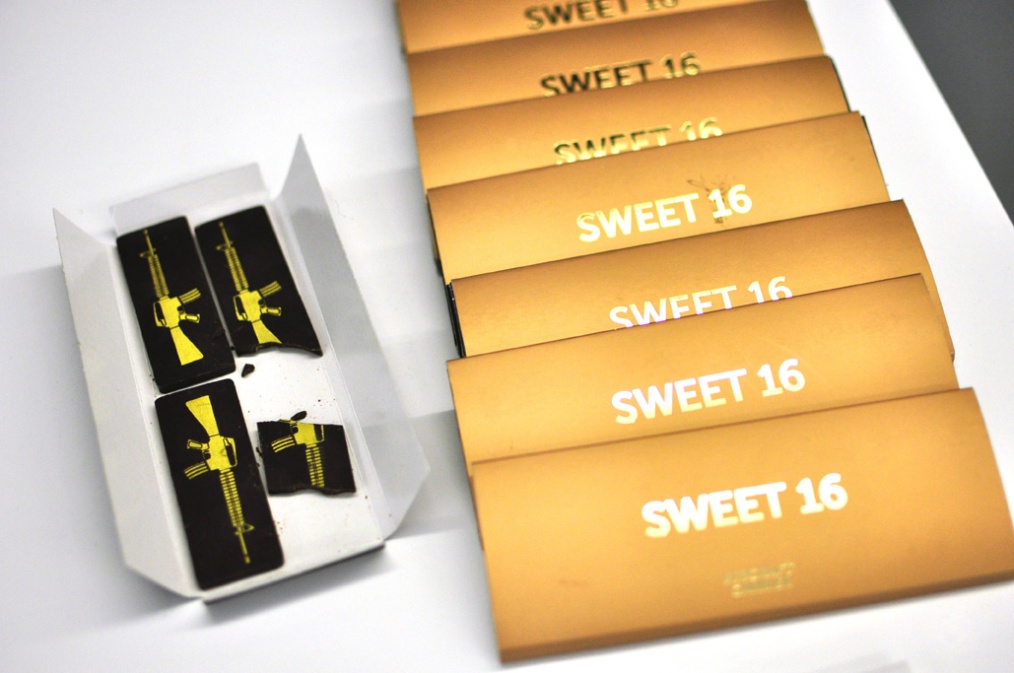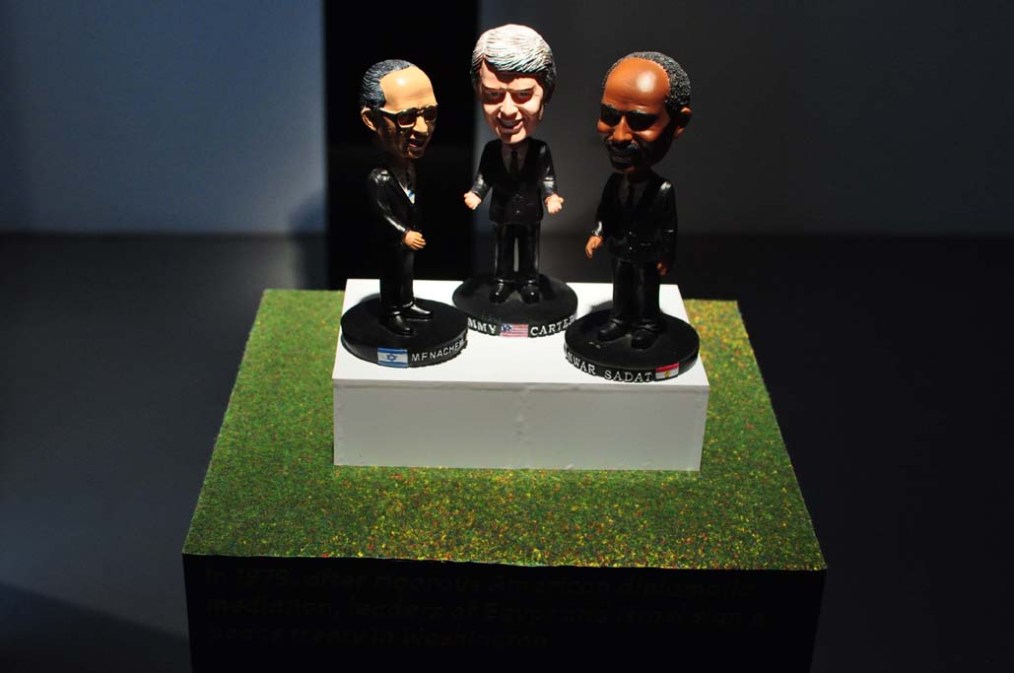Among a long trip to the Balkans and a shorter one to Portugal, this summer I managed to squeeze in a little side trip to Venice. I love Venice. It is such a magic place, with no equals in the world (no matter how many slogans you will hear about other cities being “the Venice of the North”, “the Venice of the East”…). Venetians may look like regular people, especially when you observe them as they hurry about their daily business: drinking an espresso at the counter, reading newspapers, handling vegetables at the market, selling Murano glasses and Venetian masks to tourists. But if you look well, you can see that they are perfectly aware of being VIRs, Very Important Residents, their pride equalled only by their stubbornness to keep on living in such a marvelous but totally unpractical city.
With the Mostra del Cinema decaying year after year, I focussed all my energies to visit the Biennale, which this year is dedicated to architecture. The exhibition is spread in different locations, mainly the Giardini and the Arsenale, the latter being the site where Venetians have built their fleet since the XII century. “Arsenale”, just like in English, can mean a deposit or a naval stockyard, but it is interesting to notice that the word actually comes from the Arabic daras-sina’ah, or “house of the industry”, which was transliterated darzanà in Venetian dialect, then arzanà. The site is incredibly atmospheric, but sadly it is open to the public only during the Biennale.

Arsenale, the old Venetian shipyard
The Giardini is a vast, pleasant garden where the national pavilions are located.

The Giardini, a park where 30 permanent national pavilions are housed
Among the pavilions of this year Biennale, the Israeli one really stands out for its audacity, slyness and humor. The pavilion itself is a sleek piece of architecture which, although dating from 1952, looks and feels very contemporary. The interior is organized in two levels, which is quite unusual for a Biennale pavilion, and every detail is either black or white, a choice highlighted with very effective lighting.

The Israeli pavilion, designed by Zeev Rechter, 1952
This year Israel hosts an exhibition titled “Aircraft Carrier”. After a short chat with the nice hosts at the entrance, I was given a guided tour of the site, which I recommend to anyone interested in understanding more of what is on display. The key to understand the exhibition lays in the title, inspired to the following quote from Alexander Haig (U.S. Secretary of State from 1981 to 1982):
“Israel is the largest American aircraft carrier in the world that cannot be sunk…and is located in a critical region for American national security.”
This bold quote is engraved in big, golden characters at the entrance of the pavilion.
The idea behind the exhibition is to examine the relationship between Israel and America from 1973 to the present, and to look at how this resulted in a capitalist orientation of what used to be an essential socialist nation. The participating artists and photographers collaborated with a merchandising designer, Tal Erez, in order to create a sophisticated set of toys that visitors can actually buy for relatively cheap prices in the attractive gift shop. The same toys are exhibited on the second floor, where they are historically framed in terms of their importance within the history of Israeli-American relations.
You will find, for instance, bobble head puppets of Begin, Sadat and Jimmy Carter (all of them with nodding heads – a reference to the famous Camp David peace treaty of 1978) and a moveable-tile puzzles for spelling “Palestine” and “Israel” (shared letters except for an R). There are chocolate bars with painted M-16 rifles on them, packaged in golden “Sweet 16” boxes (the largest weapon airlift in history was code-named “Operation Nickel Grass”, organized to help Israel win the 1973 war), as well as ties with the logo of IBM (in 1972 IBM opened its research center in Israel, the largest outside of US). There is a foldable postcard with which you can virtually send an Israeli settlement wherever you wish. You will even find a limited edition of the Monopoly game, entirely redesigned to match the Israeli nomenclature.
I thought these toys were extremely well designed, clever and fun.

The dramatic shift of Israel from socialism into capitalism is also expressed in Israeli architecture, although the link to architecture was somehow hard to grasp, the more immediate focus being sociopolitical. Together with the pedestals of toys, there are four totem-stations with photographs and installations, which have been chosen to exemplify the rapid changes that took place in Israeli architecture since 1973. Here you will find the Florian Holzherr’s quite obvious photos of malls, emblematic of the hyper-consumerism trend, as well as photos of landmark Israeli skyscrapers, whose eclectic style unfortunately seems to celebrate solely the ego of the architect, in total disconnection with the surrounding urban landscape. This phenomenon is part of a larger trend in Israeli architecture: the segregation of space into discrete environments with parallel architectures, built for sub-groups which do not intermingle. Artist Jan Tichy reflects on this segregation in his “Flotilla Workshop”, an ice sculpture on top of an aluminum tray that is melting away and slowly turning into floating islands.
The exhibition closes with a video section, where visitors can see a movie about houses which are demolished during seismic emergency simulations, and another one looking at the the construction of Highway 6, a privatized enterprise which was also the largest infrastructure projects undertaken in Israel in recent years. By chatting with the facilitator, I understood that these videos, by Nira Pereg, look into how the State is collaborating with private contractors. In Israel, when a contractor needs to demolish a building, the State offers to do it free of charge in order to use it for practicing disaster-related rescue techniques. Such operations are often conducted with Israeli-American collaboration.
The pavilion is therefore very smartly organized. First, it attracts visitors with a wide concept store, where products on sale are presented without any special contextaulization. The visitor is free to look, handle, investigate (or not) the meaning of the toys. Then, the same products are “musealized” on isolated pedestals, with captions which helps to understand more about Israeli recent history and relationship with the US. In between, photos and videos relate the visual story of how economic growth impacted on architecture and the way Israelis live. The visitor then leaves the pavilion going through the initial gift shop, where on a second look the no more innocent toys have been embedded with a dense sociopolitical meaning.
The exhibition, curated by Erez Ella (a curator and practicing architect), Milana Gitzin-Adiram (ex-director of the MOBY, Museum of Bat Yam) and Dan Handel (curator at the Canadian centre for architecture (CCA) in Montreal), will run through November 25th. Participants include
Assaf Evron, Fernando Guerra, Florian Holzherr, Nira Pereg, and Jan Tichy, as well as product designer Tal Erez.
AIRCRAFT CARRIER







This is particularly ironic when the subject of the Biennale is architecture, cities and society.The architectural critic for Haaretz, Esther Zandberg has described this exhibition as “an extreme example of architectural symbolism and manipulation, in which the profession is called upon to shape consciousness to specific needs. At times, architecture even exploits the viewers’ lack of defence, leading him or her, through its unique devices to the seemingly essential conclusion that was outlined in advance.” Thus the eminent Israeli architects represented here are being used as tools of Israeli propaganda, and consequently would be deemed to be complicit in the agenda of excluding the Palestinian narrative. Significantly, the Israeli organisation Zochrot which deals with remembering the Nakba has been omitted from this exhibition.